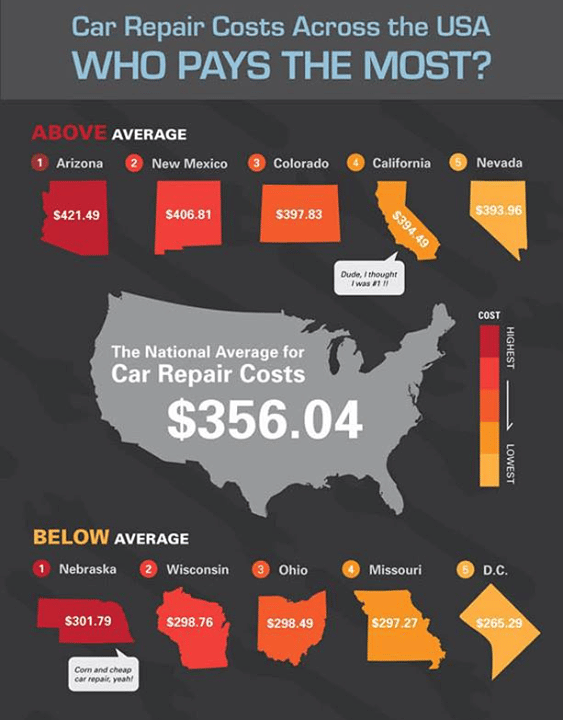However, What Can Be Done About Spongy Brake Pedals? Find The Solution Laid Out Listed Below!
However, What Can Be Done About Spongy Brake Pedals? Find The Solution Laid Out Listed Below!
Blog Article
Authored By-Hinrichsen White
When it concerns your car's brake system, understanding typical issues can conserve you from prospective safety and security risks. From determining brake pad wear to addressing brake liquid leaks, understanding just how to take on these issues is crucial. However what regarding https://chancefaaxr.blog-a-story.com/10092035/start-your-automobile-repair-work-trip-by-asking-these-10-important-questions-to-your-mechanic-before-beginning-any-repair-work ? There's a fix for that also. Stay tuned to learn more concerning these problems and the useful remedies that can keep you securely on the road.
Brake Pad Put On and Replacement
When it involves maintaining your car's brake system, one critical facet to watch on is the wear and replacement of brake pads. Brake pads are necessary components that press against the brake rotors to decrease or stop your car. With time, these pads wear down because of rubbing, requiring regular examination and substitute to ensure your brakes function efficiently.
To identify if your brake pads need replacement, pay attention for screeching or grinding noises when you use the brakes. Furthermore, if your lorry takes longer to quit or you observe vibrations or pulsations when braking, it might be time to replace the brake pads.
Ignoring used brake pads can lead to reduced braking performance, damage to other brake components, and even brake failing.
Replacing brake pads is a reasonably straightforward procedure for numerous vehicles. However, if you're not sure or awkward executing this job, it's best to get in touch with an expert technician to guarantee correct installation and ideal brake efficiency.
Consistently checking and replacing brake pads is important for your safety and the longevity of your car's braking system.
Brake Liquid Leaks and Upkeep
To ensure your automobile's brake system operates ideally, it is very important to also focus on brake liquid leakages and maintenance. Brake liquid is vital for transmitting the force from your foot on the brake pedal to the actual stopping system. https://oilandfilterchange83838.spintheblog.com/30308790/find-out-the-vital-action-in-a-cleansing-checklist-to-maintain-your-vehicle-s-inside-in-excellent-condition-and-welcoming with brake fluid is leakages, which can happen due to tatty brake lines, seals, or links. If you see a pool or leaks under your vehicle, it's essential to resolve the leak without delay to prevent a potential brake failing.
Regularly examining your brake liquid degree is essential to preserving your brake system. Reduced brake liquid can lead to air getting in the brake lines, which endangers braking performance.
In addition, old or polluted brake fluid can affect the general performance of your brakes. It's recommended to adhere to the manufacturer's guidelines on when to change the brake fluid, commonly every 2 years.
Spongy Brake Pedal: Blood Loss Brakes
If you have actually ever before experienced a spongy brake pedal while driving, you understand the importance of preserving a company and responsive braking system. One usual root cause of a squishy brake pedal is air caught in the brake lines. When air gets in the brake system, it can cause a loss of hydraulic stress, leading to that upsetting squishy sensation when you push the brake pedal.
To settle this issue, bleeding the brakes is necessary. Hemorrhaging the brakes involves eliminating the air from the brake lines to restore appropriate hydraulic pressure.
To https://wisconsinmuslimjournal.org/toms-auto-maintenance-the-true-meaning-of-service/ , you'll require a helper to help you. Begin by finding the brake bleeder valve on each wheel, generally located near the brake caliper. With a wrench, loosen the shutoff and have your assistant press the brake pedal while you observe any kind of air bubbles coming out. Repeat this procedure for every wheel, beginning with the wheel farthest from the master cyndrical tube and relocating closer.
When you no longer see air bubbles and only clear fluid emerges, tighten up the valve and top up the brake liquid storage tank as needed. Hemorrhaging the brakes assists make sure a company brake pedal and enhances overall braking efficiency.
Final thought
Since you understand usual brake problems and how to fix them, you can ensure your car's safety and efficiency. Remember to pay attention for warning signs like shrieking noises or mushy brake pedals, and address them without delay. Normal upkeep and prompt substitutes are essential to maintaining your brakes in leading condition. Stay positive and alert to your brake system to take pleasure in secure and reputable driving experiences.
